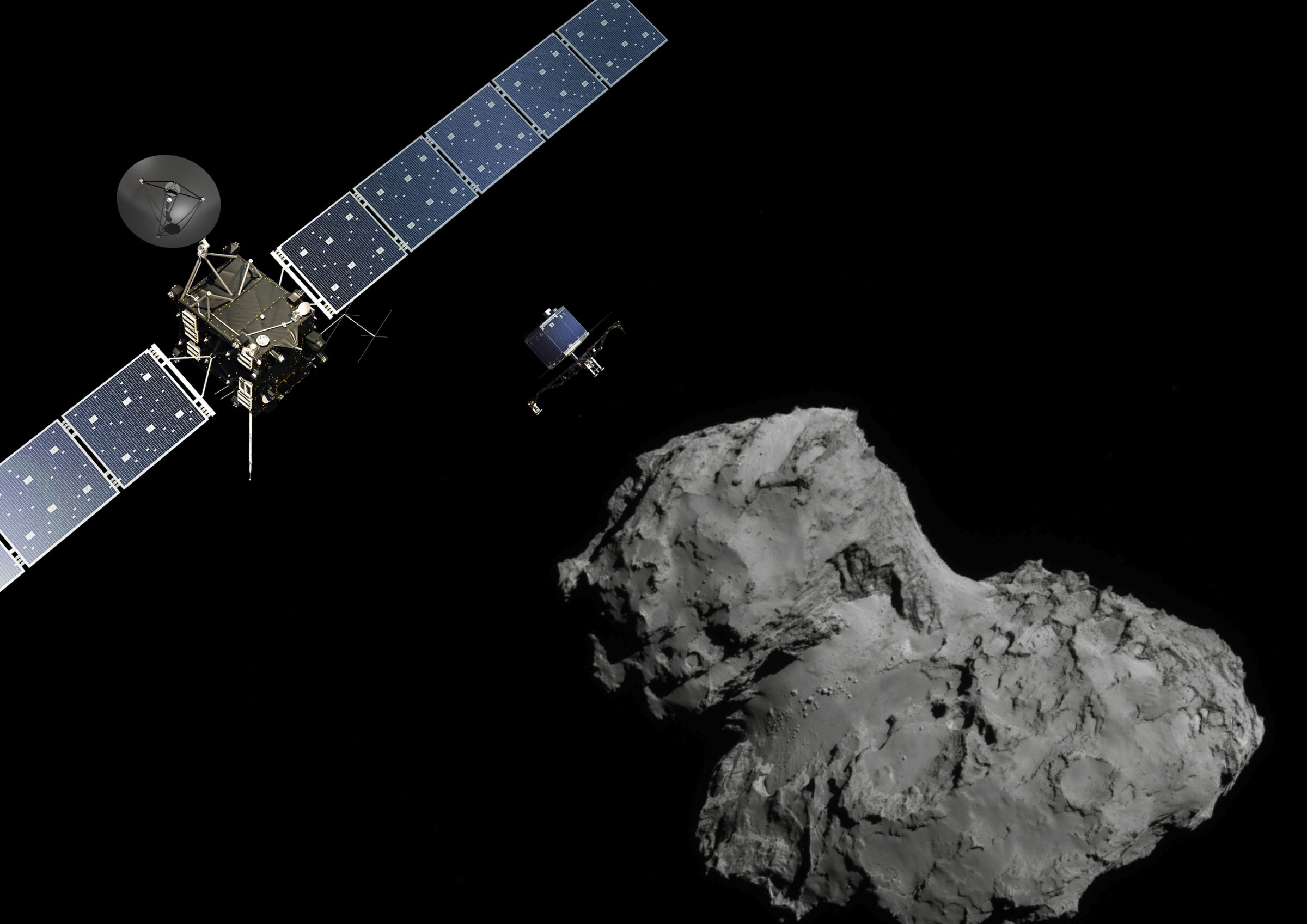
An epic — and sometimes emotional — space mission that spanned 12 years and showed us spectacular close-up images of another world will end on Friday, when the Rosetta spacecraft makes a controlled descent to the comet’s surface.
The European Space Agency (ESA) said the spacecraft was ordered to change course Thursday and began barreling toward Comet 67P/Churyumov-Gerasimenko, which it has been orbiting for the past two years.
Rosetta will make a low velocity crash into the comet around 7:30 a.m. ET. The spacecraft is not expected to survive the impact.
The ESA said that as the aging machinery was “reaching the end of its natural life,” the mission will conclude with a collision that will bring Rosetta close enough for one last, detailed look at the 2.5-mile wide ball of ice and dust.
The ESA dispatched Rosetta on March 2, 2004 to begin its pursuit of 67P. It took more than 10 years to reach the comet and slip into its orbit. On Nov. 12, 2014, Rosetta launched the Philae lander to 67P’s icy floor, achieving the first landing on a comet in the history of space exploration.
Read More: Why the First Comet Landing Matters
The mission, which cost a total of about $1.8 billion, thrilled scientists and the public alike. Rosetta captured data of unprecedented detail that scientists hope will help the world to better understand the origins of the Earth.
The ESA will livestream Rosetta’s final rendezvous with Comet 67P.
More Must-Reads From TIME
- Dua Lipa Manifested All of This
- Exclusive: Google Workers Revolt Over $1.2 Billion Contract With Israel
- Stop Looking for Your Forever Home
- The Sympathizer Counters 50 Years of Hollywood Vietnam War Narratives
- The Bliss of Seeing the Eclipse From Cleveland
- Hormonal Birth Control Doesn’t Deserve Its Bad Reputation
- The Best TV Shows to Watch on Peacock
- Want Weekly Recs on What to Watch, Read, and More? Sign Up for Worth Your Time
Contact us at letters@time.com